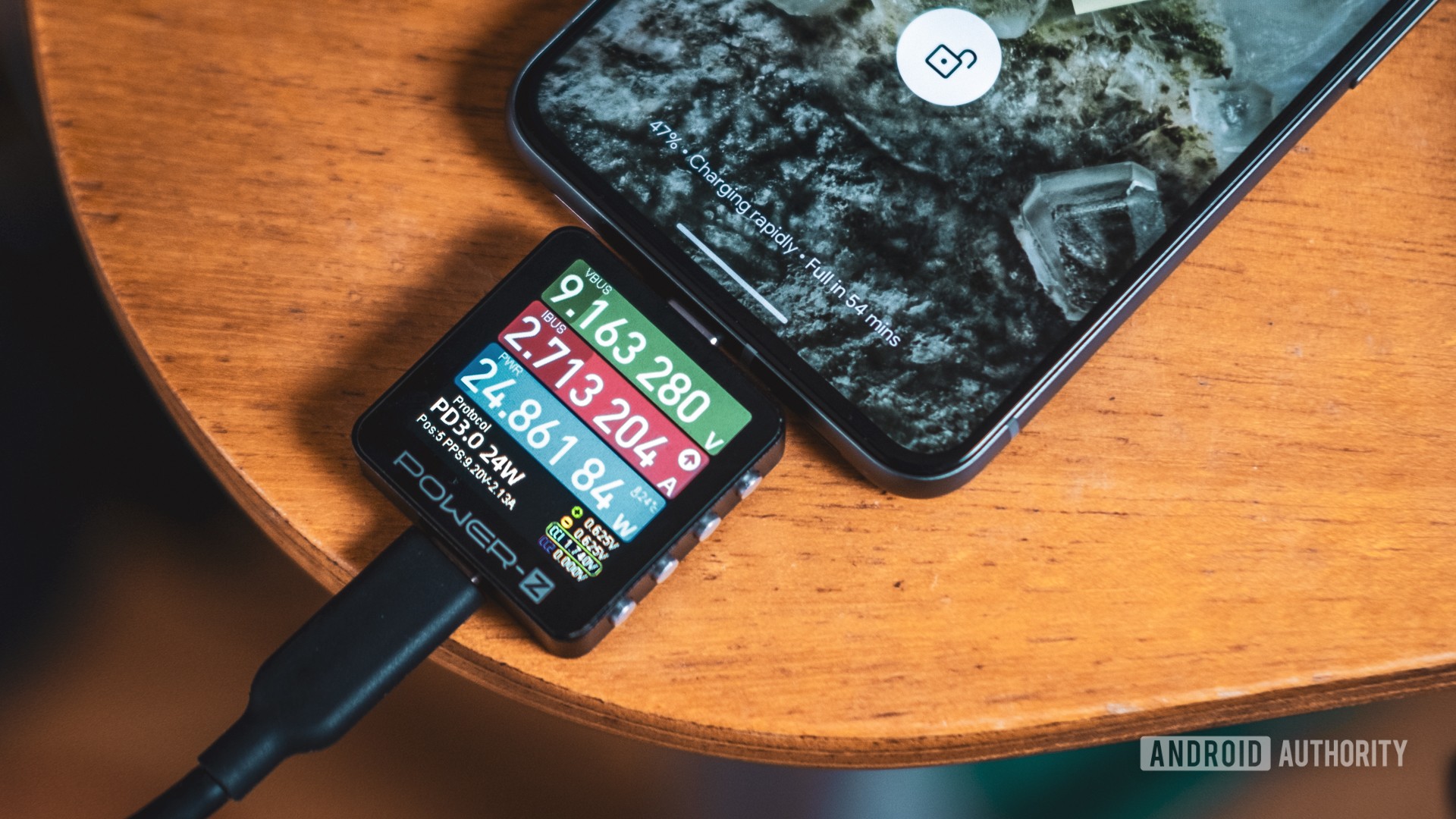How we test: The Android Authority testing methodology
Reviewing a product involves a blend of subjective analysis and objective data. For features like software, where personal preference plays a significant role, we provide detailed impressions that help our readers gauge how well a device might suit their individual needs and tastes.
On the other hand, aspects like performance offer more room for quantitative analysis. At Android Authority, we have a systematic approach to testing. By collecting concrete data on a variety of performance metrics, we can draw comparisons that are based on hard evidence rather than opinion.
This methodical testing allows us to position a new smartphone in the broader context of the market. We measure how it stacks up not just against its immediate predecessor, but also against its current competitors. By tracking and analyzing these results, we ensure that our reviews provide a clear, unbiased picture of where each smartphone excels and where it may fall short.
Here’s a quick breakdown of our testing methodology and principles. Also read our How we review page for a broader look at what goes into reviews on Android Authority.

Benchmarking
How your phone performs is important, whether it’s multitasking your way through your day as a social butterfly or smashing high scores in the latest games. While you’d be hard-pressed to buy an outright badly performing phone these days, knowing where your phone stacks up against the competition is increasingly important when making a purchase you hope will last four or five years, or longer.
We use three benchmark tests to evaluate performance:
- Geekbench 6 is a CPU test that covers a huge range of workloads; file compression, PDF rendering, machine learning workloads, image editing, and ray tracing, to name just a few. It’s a good mix of real-world and more depending CPU capabilities. While most daily apps won’t stress your CPU as hard, a solid Geekbench 6 score ensures your phone can handle future tasks too.
- PCMark’s Work 3.0 suite is less of an extreme test and more focused on broader system performance, encompassing web rendering, document and media editing, and data manipulation using common Android APIs. RAM, storage class, and CPU/battery optimizations play more of a part here too. If your phone performs well in PCMark’s test, it’ll be snappy across a wide range of use cases.
- 3DMark Wild Life stress test is an extreme test of graphics, pushing your phone as hard if not harder than the latest high-end games. As well as snapshotting peak GPU performance, the stress test gauges how a phone performs over a 20-minute session to see how frame rates hold up over time. While more demanding than most games, this is a solid test for gamers who will play longer sessions and hints at futureproofing as games push more demanding graphics.
Battery life
Everyone wants to know if their future phone will last all day, so we run three tests to run through three of the most common daily use cases – web browsing, video streaming, and gaming.
Our web and video tests each run on a four-hour looping script, which we then use to extrapolate the maximum number of hours the phone can perform these tasks. We run a separate hour-long high-end 3D gaming test to give us a minimum expected battery lifetime for high-end gaming. 2D and casual games that don’t place much demand on the GPU will last many hours longer.
Before testing battery life, displays are calibrated to 300 nits, which falls between indoor and outdoor brightness levels for a “typical” rather than best or worst-case scenario.
Charging
Even if your phone has solid battery life, you’ll have to reach for the charger at some point, and knowing how long it will take to charge your phone, and which chargers are optimal is important information in today’s age of finicky charging standards, cables, and power levels.
First, we test charging times to full as well as key milestones such as 50% battery, giving us an idea of how quickly you can get back to using the phone. At the same time, we also test the power level at the phone’s USB port across the entire charge cycle to make sure brands are honest in their power claims, check the protocol used for third-party compatibility, and monitor internal battery temperatures to see if fast charging poses any risks long term battery health.